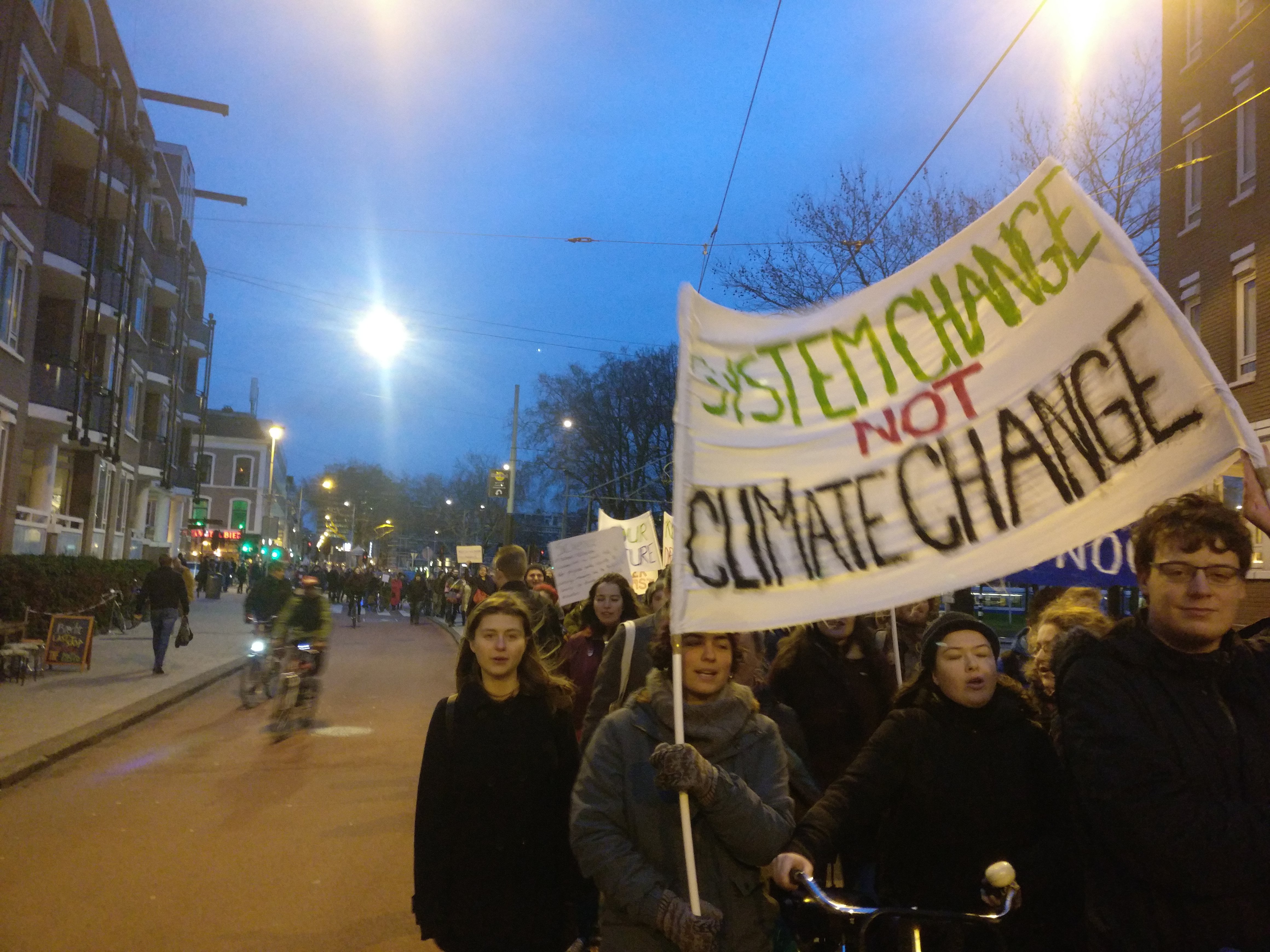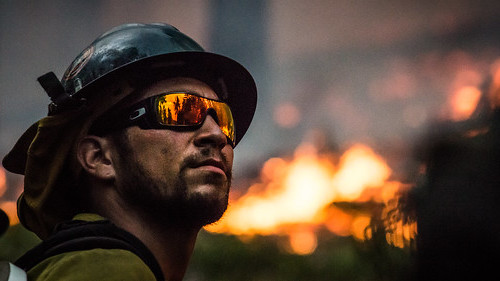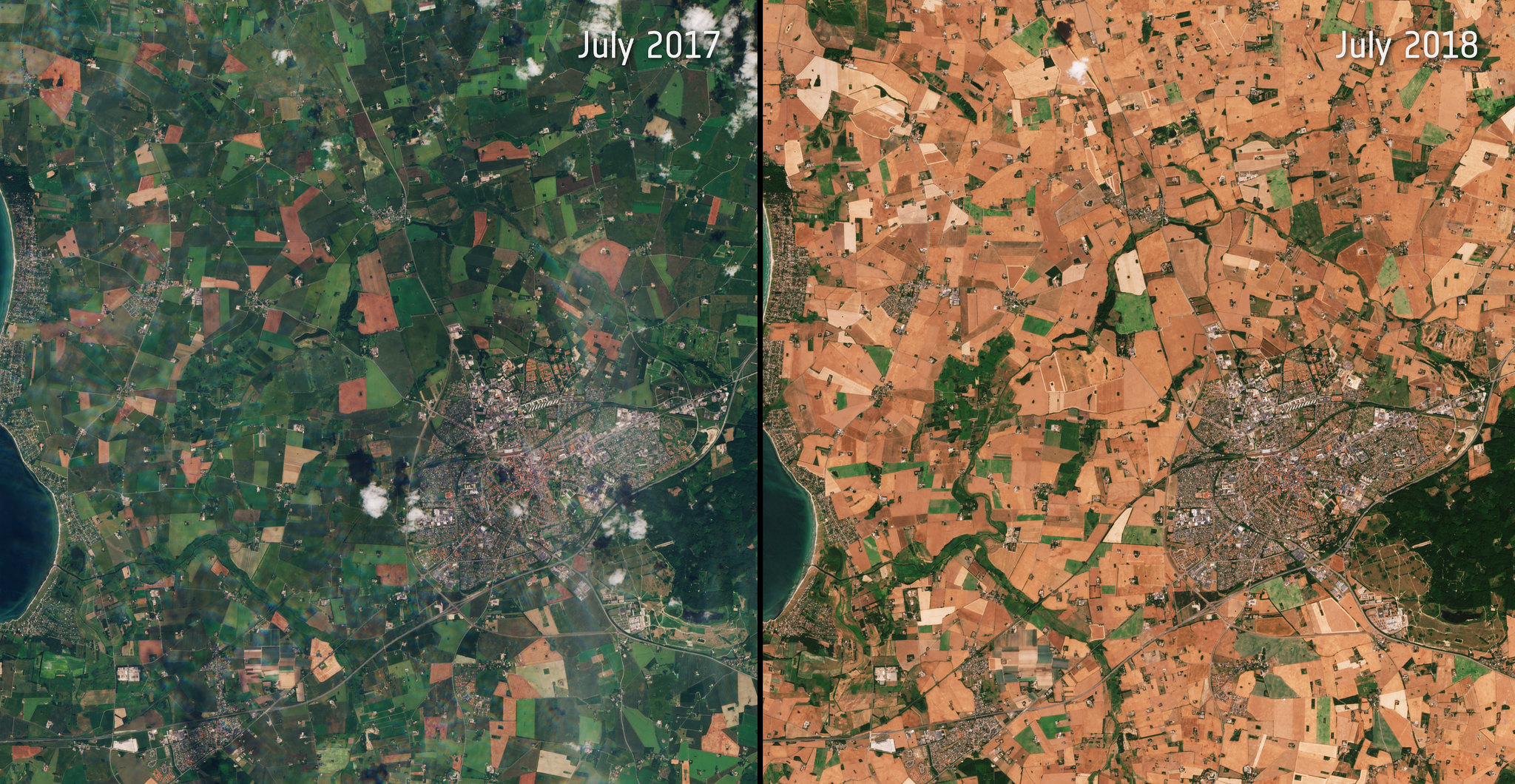As Costs of Climate Crisis Grow, Protest Movement Escalates
by Kevin Zeese and Margaret Flowers, Consortium News:

Long term campaigns to decarbonize the economy and demand emergency climate policies are getting stronger, write Kevin Zeese and Margaret Flowers.
The warnings of climate chaos are coming so fast they are difficult to keep up with. Storms, heatwaves and climate-related weather disasters are increasing at a rapid pace. The leadership of the two corporate-dominated political parties are trying to keep the climate issue out of the 2020 campaign, but the movement is becoming too big to ignore.
Climate justice protests against fossil fuel infrastructure, politicians and the media are also growing. An industry publication describes how activists are “driving pipeline rejections” reporting, “From large, interstate pipelines to small lines connecting towns and neighborhoods, anti-fossil fuel activists have proven highly successful at blocking, through regulations or lawsuits, new natural gas infrastructure in the Northeastern United States.”

Earth Strike kick-off protest in Amsterdam, Jan. 15, 2019. (Accon4, CC BY-SA 4.0, via Wikimedia Commons)
Reports of Climate Chaos
Several reports in recent weeks are expressing new concerns about the climate crisis.
An MIT study published last week found that we may be “at the precipice of an excitation” of the carbon cycle. Authors reported that when the rate at which carbon dioxide enters the oceans pushes past a certain critical threshold, it can trigger a reflex of severe ocean acidification that lasts for 10,000 years. The history of the earth shows that over the last 540 million years, this has coincided with four of the five great mass extinctions. Today’s oceans are absorbing carbon at an order of magnitude faster than the worst case in the geologic record, even though humans have only been extracting carbon for the last 100 years. This is likely to be similar to past global catastrophes potentially culminating in the Earth’s sixth mass extinction.
A June 20 report by the Center for Climate Integrity found that U.S. coastal communities face more than $400 billion in costs over the next 20 years, much of it sooner, to defend themselves from inevitable sea-level rise.
Related to this, a study published May 20 in Proceedings of the National Academy of Sciences concluded that coasts should plan for 6.5 feet of sea level rise by 2100. Ice loss from Antarctica and Greenland could cause far more sea-level rise than previously thought.
These reports are forcing the power structure to face the reality of the climate crisis. Last month, Moody’s Analytics examined the economic impact of the failure to curb planet-warming emissions in“The Economic Implications of Climate Change.” Moody’s warns there will be a $69 trillion price tag by 2100 due to the far-reaching economic damage of the climate crisis. They warned: “There is no denying it: The longer we wait to take bold action to curb emissions, the higher the costs will be for all of us.”
These reports come at a time of increased climate-caused disasters.
- This year, wildfires have scorched more than 1.2 million acres in Alaska, making it one of the state’s three biggest fire years on record. Fires are spreading farther north into the Arctic, burning more intensely and starting earlier in the year as climate models have suggested. On July 4, Anchorage hit 90°F, breaking the city’s all-time record by 5 degrees. Alaska’s statewide average temperature was 7.9°F above average, according to NOAA’s latest National State of the Climate report. For the first time in the 95-year record, the year-long July-to-June average temperature for Alaska as a whole was above freezing.

A member of the Geronimo Interagency Hotshot [wildfire] Crew, Bureau of Indian Affairs, San Carlos Agency in Arizona in 2014. (USDA/ Lance Cheung)
- Around the world, global warming has clearly contributed to an increase in extreme fires from tropical rainforests to boreal evergreen forests, and they are often linked with heatwaves. Fires pose new threats to places that aren’t used to experiencing them, including temperate mid-latitude forests near regions with dense populations, as shown by unusual wildfires in places like Germany during last summer’s European heatwave and drought. There is rapid growth of unusually extreme fires burning across South America, Australia, and western North America like the extreme fires in California and Canada last year.
- In Indian Country, according to the 2018 National Climate Assessment, weather on the Northern Great Plains has been getting more variable, erratic and destructive. In 2011, the Northern Plains faced a rash of wildfires and drought, followed in 2012, by severe flooding. Occasionally, these take the form of high-powered storms, like tornadoes that ravaged South Dakota reservations in 2016, or the ice storm of 2018, or the bomb cyclone of 2019. A bomb cyclone, last March occurred when an unseasonably hot column of air shot suddenly upward and collided with the frigid high atmosphere sending barometric pressure plummeting. In seconds, the sky erupted bringing devastating wind, storm, and flooding. Homes and ranches of South Dakota’s Pine Ridge Indian Reservation were hit like a missile, more than 500 homes were left uninhabitable. Click here for information on how you can help.
- Washington, D.C., just experienced nearly a month’s worth of rain in an hour. According to a paperpublished in the journal Nature, these intense rains are a byproduct of man-made climate change.
- Last month was the hottest June on record globally. In Europe, there were record heat waves that sent Europe’s temperatures soaring to 114 degrees Fahrenheit.

Satellite images of the same agricultural fields around the town of Slagelse in Zealand, Denmark. The one on the left is from July 2017. The one on the right, from July 2018, shows the toll of heat and drought. (European Space Agency via Flickr)
Despite these realities, there is inadequate action by most nations of the world especially the United States. President Donald Trump dismissed the need for climate action during the G-20 summit in Japan, saying he doesn’t want to take action to confront the emergency because such a move would threaten corporate profits. As experts have warned, if we do not confront the climate emergency now, we will pay much more later.
DNC Resisting Climate Debate
In the 2020 election cycle, the Democratic Party is resisting climate change as an issue even though 15 of its presidential candidates, more than 50 of its member organizations in the states, and a slew of progressive organizations that make up its voting base, some armed with petitions bearing over 200,000 signatures, are calling for the Democratic National Committee to hold a separate climate-focused debate. On June 10, the executive committee of the Democratic Party in Miami-Dade County — the U.S. metropolitan area considered most vulnerable to sea-level rise — voted unanimously to urge Democrats to devote one of the 12 Democratic presidential debates to the climate crisis.

Banner at San Francisco Youth Climate Strike, March 2019.
(Intothewoods7, CC BY-SA 4.0, via Wikimedia Commons)
DNC Chairman Tom Perez, who rejected a climate-focused debate, tried to explain the party’s opposition in a post on Medium, saying it would be impractical to hold a single-issue forum. His refusal led to hundreds of activists sitting in at the DNC headquarters, including sleeping overnight, before the first debate, demanding a debate on climate change.
Sen. Bernie Sanders and Rep. Alexandria Ocasio-Cortez introduced a resolution asking Congress to declare that global warming is an emergency and demanding a massive mobilization of resources to protect the U.S. economy, society and national security. They called for “a national, social, industrial, and economic mobilization of the resources and labor of the United States at a massive-scale to halt, reverse, mitigate, and prepare for the consequences of the climate emergency and to restore the climate for future generations.”
Billionaire Tom Steyer has entered the 2020 race pledging to spend $100 million and focus his campaign on climate change. In his first television advertisement, he focused on the corruption of government and the economy and on climate. He said: “You look at climate change, that is people who are saying we’d rather make money than save the world.”
Green Party candidate Howie Hawkins has put forward an ecosocialist Green New Deal that not only transitions to a clean energy economy but remakes the economy and creates an economic bill of rights while cutting the military budget by 75 percent.
The Climate Justice Movement’s Growing Power
The movement is building power and impacting the direction of the U.S. and the world, but the response by those supporting the status quo was shown in France recently when on the hottest day in French history climate protesters were brutally tear-gassed for demanding climate action.
Read More @ ConsortiumNews.com
Loading...



